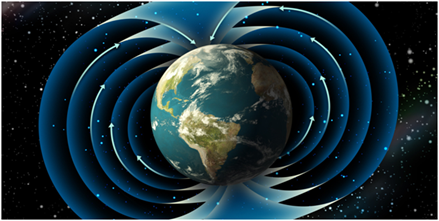We have a football field, a field of valleys and hills. What exactly a field is ? It can be thought as a area containing many, many points. Each point may have a value like its height, its temperature, its greenness etc.
Consider an LED lamp. There is field of light around it. But, this is 3-dimensional field unlike surface area. The light is very bright close to the bulb and the light fads away with the distance. This kind of fields always follow 'inverse square law'. It says that the decrease in intensity (of light) is proportional to the square of the distance. Our eyes can sense the light. If you put any light sensitive-device in this field, it will be activated, example - light powered calculator.
Now consider a magnet, there is a magnetic field around it similar to the light field. But it is not visible. Only another magnet can sense it. If you put iron pins in the field, it will be attracted. A compass will be disturbed by the field.
Next, consider a mobile phone tower. It radiates radio waves or there is a electromagnetic field around it. All the mobile phone in the field are kept alive. When we move away from the field, we get "out of reach" message.
'Remote' devices, Bluetooth devices, WiFi network, - all generate electromagnetic fields around them. They connect other devices to them and keep them active.
Around any mass, plants, sun and stars, there is a gravitational field. The sun holds all the nine planets because of its gravity. The earth keeps the moon in its hold because of its gravitational field.
Electric charges have electric field around them. Moving and oscillating charges produce electromagnetic waves or field. To day, we go ' wireless way' because of these fields.
Action at a distance, without contacting is possible only because of these fields.
Tomorrow, a virtual fence made using a field, may stop us from trespassing, encroaching and invading.
---------------------------------------------------------------
